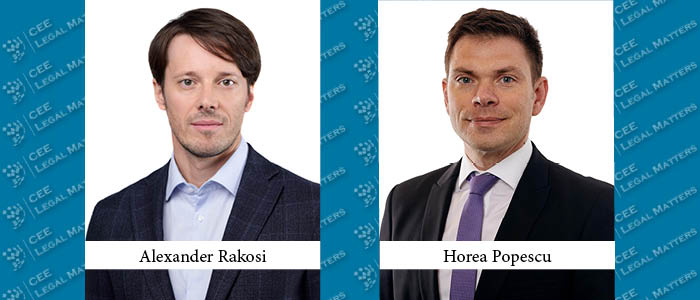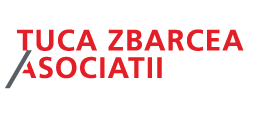With CMS’s recently published European M&A Outlook report taking the temperature of the M&A activity across the continent, CMS Romania Managing Partner Horea Popescu and CMS Vienna Partner Alexander Rakosi share their insights on M&A trends in the CEE region.
CEELM: Looking at the M&A trends, can you provide us with your perspective on the last 12 months?
Rakosi: In general, we’ve witnessed relatively robust activity levels over the past year. Several sectors have remained quite active, though not quite at the levels seen in early 2021 or 2022. Nonetheless, compared to the pre-pandemic period, the situation has been quite favorable. Due to various geopolitical developments, financing has become more challenging, leading to a decline in large-cap deals. However, mid-market and smaller deals have continued to see strong activity levels. Corporates have remained quite active, and there have been interesting targets available across the board, with lower competition levels. Overall, pricing has become somewhat trickier, making it more difficult for clients to continue to rely on rising EBITDA multiples. Predicting the direction of the market has also become less certain than in the past – thus, there’s a greater focus on operational improvements in the context of pricing assessments.
Popescu: I believe we can divide this period into two segments, starting with February 24, 2022. The first six months were exceptionally hectic, with individuals and assets seeking refuge from conflict zones. This led to increased interest in CEE assets. In 2023, the first half of the year presented some challenging conditions, resulting in a slight downturn in M&A activity, partly due to the ongoing conflict.
When we examine the region as a whole, the overall picture is neither particularly gloomy nor exciting. However, when we delve into individual countries, this perspective changes.
CEELM: What then can you tell us about individual markets in the region?
Popescu: The picture varies significantly. In terms of economic growth, the region has managed to avoid recessions and sluggish growth. Some countries have remained consistently on track, such as Romania, which is experiencing the highest regional growth. Deal activity tends to follow economic trends, and when deal volume is decreasing, it often corresponds to little or no economic growth.
We’ve observed an uptick in Romania, both in mid-cap and large-cap deals, with several transactions taking place this year. The Czech Republic and Hungary experienced some slowdowns, and Poland, despite a few fantastic years in the past, also saw a relative slowdown. Interestingly, one might have expected Poland to host the largest deal, but the largest transaction occurred in Romania – Enel’s acquisition by PPC. This could potentially indicate some softness in other markets.
Rakosi: In the Balkans, it was a rather moderate 2022. There were some unique factors at play, with Serbia dealing with its own situation related to the Russia-Ukraine conflict. Some Russian businesses moved to Serbia, which had a positive impact on the Serbian market, however, if we exclude this effect, the overall activity levels in Slovenia and Croatia were relatively higher. Croatia’s entry into the eurozone and the Schengen zone has increased investor confidence, and Slovenia still has a good share of smaller and medium-sized export-oriented companies, which contributes to its activity. In general, the results have been decent, with no major market-shifting developments.
CEELM: Looking ahead to the next 12 to 18 months, what can we anticipate?
Popescu: I believe technology will continue to be among the top three sectors in terms of M&A activity. Furthermore, I expect the energy sector to experience significant growth. There have been intriguing deals, and there is substantial interest in investing in renewables and alternative energy sources, including gas, offshore ventures, nuclear energy, and similar areas.
Rakosi: In addition to that, software services, data analytics, and business services are all crucial components that corporates are considering when modernizing their logistics systems for the coming period. Furthermore, certain areas within the industrial sector, such as packaging and recycling, continue to offer compelling opportunities for M&A activity.
CEELM: How do you foresee the increased cost of financing will affect the next 12 months?
Rakosi: The pressure to secure financing will likely persist. This could make it somewhat more challenging to finance large deals but could also create opportunities for cash-rich corporations. Many corporate balance sheets currently hold significant cash reserves that facilitate mid-market transactions. Moreover, in jurisdictions like Poland, there are initiatives such as private debt and private credit that offer alternative financing options. This could open up new avenues for funding and potentially lead to an interesting landscape for deals in the future.
CEELM: What about private equity in particular – what’s its current situation?
Popescu: Private equity and high-interest rates don’t usually align well; it doesn’t make much economic sense to finance acquisitions primarily through debt in such an environment.
However, private equity investors are still holding a substantial amount of assets – PE funds are now keeping their assets for more extended periods than we’ve typically seen in the past. I believe we may still witness some surprises by the end of the year, potentially in Romania or Poland, with interesting deals or significant PE exits. Regarding prices and transaction volumes, it remains to be seen, but there will likely be sales.While private equity firms have the financial resources, their approach will need to be re-evaluated to determine the right valuation in light of current interest rates.
Rakosi: Private equity does have a significant amount of uninvested capital, and despite a slowdown in fundraising, PE funds don’t seem dissatisfied. Exits, in general, have decreased, but that doesn’t mean they won’t happen. As for new investments, most of the deals happening now are add-ons, which is a strategy for reinforcing existing PE investments until exit or new investment opportunities arise. Regional funds, in particular, appear to be content with their development, based on our observations. And, PE funds specializing in turnarounds and distressed deals are finding a number of interesting opportunities for progress.
Regarding deal features, we’ve noticed an increase in the use of earnouts. Our PE study published earlier in 2023 highlighted an interesting shift from the previous year, with earnouts being a prevalent feature in current deals (with the aim to bridge different pricing expectations between sellers and buyers).
CEELM: Looking ahead, which markets would you be inclined to bet on, and what uncertainties remain?
Popescu: While we anticipate interest rates decreasing, GDP growth increasing, and an improved geopolitical situation, these factors are, really, beyond the control of regional players. So, we must remain cautious and wait to see how things unfold. I do believe that M&A activity will see an uptick in the next 12 months, although CEE may not be the fastest-growing region in this regard – Western Europe and the UK are likely to outpace CEE in terms of growth. Nevertheless, we expect continuous investment in the region because the fundamentals here remain strong. Furthermore, there are additional developments on the horizon, with more countries unlocking access to EU funds. Ultimately, we maintain confidence in Poland and Romania. Romania has not experienced a recession since the early 2000s, which gives us great optimism for the years ahead.
Rakosi: There is indeed more skepticism across CEE than in previous years. However, when we delve deeper into the underlying data of our recent report, there is a notable difference in sentiment between non-CEE players, who tend to be more pessimistic about the region, and CEE players. I believe that the uncertainty related to Ukraine and Russia, and the associated pessimism, is part of the broader geopolitical context in the region. While there are certainly threats, there are also opportunities. I anticipate there will be more regional investments in the region compared to international investments. There are examples of untapped markets, such as North Macedonia. If regulatory stability could be achieved there, it could lead to noticeable growth. Additionally, we hope that Slovenia and Croatia may have a brighter outlook if they capitalize on consumer market/retail capabilities.
This article was originally published in Issue 10.9 of the CEE Legal Matters Magazine. If you would like to receive a hard copy of the magazine, you can subscribe here.



